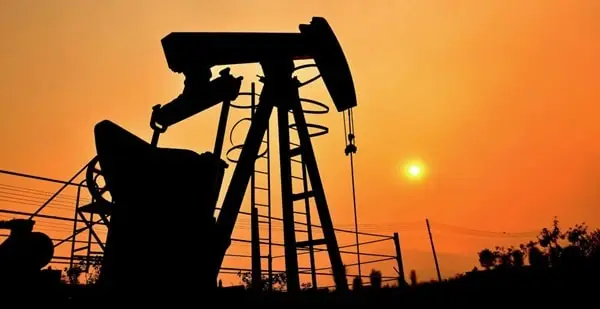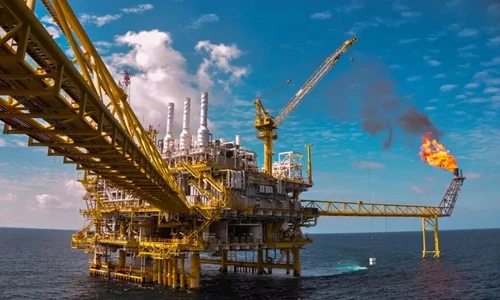Oil is a source of “black gold”, which is treated as a keying natural resource and best powering industry, transportation, and home. India’s petroleum industry is of great significance for India as it ensures the energy needs of the Country, especially as it is a developing nation. Population and economic growth mean that the Indian petroleum industry is enlarging, and in some states, such as mentioned above, they are the main contributors. It is time to take a deep look at the top 5 highest oil-producing states in India in 2024.

1. Rajasthan
The realisation of the Rajasthan oil field index is a clear indicator of this generation’s economic breakthrough, which belongs to the people of the Barmer district. The Cairn India, a sub-brand of Vedanta Limited, manages the Mangala, Bhagyam, and Aishwariya, all of which are oil fields in Rajasthan and, therefore, the source of a comprehensive share of the country’s oil in the national petroleum production. The petroleum leans in India are not localization-based, as can be depicted by taking the example of Rajasthan, the source of the largest oil in the region.
2. Gujarat
Gujarat of Western India remains a proven entity as the nation’s leading oil and natural gas producer. Crude oil extraction and its further processing emphasize the state’s key role in developing India’s national energy system. The Jamnagar Refinery, which is RIL’s property, is the world’s largest oil refinery complex in production. So Gujarat continues to be a major source of petroleum supply worldwide. Besides that, Gujarat encompasses various other refineries and petrochemical plants as well. Thus, Gujarat’s overall contribution to petroleum delivery has become substantial.
3. Assam
Assam is the front-line state in north-eastern India, which is naturally blessed with petroleum reserves predominantly found in the Upper Assam region. The state government has successfully played a key role in India’s petroleum sector since identifying the resources in Digboi during the latter half of the 19th century. It has now become one of the oldest oil-producing regions in the country. The crude oil output in Assam nurtures domestic consumption and export and the industrial and import dynamic directly and indirectly. On the other hand, the downstream section includes several refineries in which the state is one of the main actors in the petroleum industry.
4. Andhra Pradesh
To the south, nestled on the coast of India, Andhra Pradesh has become our significant teammate in petroleum production and every other level of industry. Undersea oil fields in the Krisha-Godavari Basin, some of the richest energy resources in the Bay of Bengal, are strategically important for the country. There are a lot of events in the basin of Andhra Pradesh concerning energy and gas exploration, production management of efficient Public utilities organizations, and quite reliable private sectors. Demand for the product is further amplified by the good location of the refining facilities and petrochemical plants that add to the state’s importance as a notable oil industry player.
5. Tamil Nadu
One of the largest states in the Indian landscape, specifically Tamil Nadu, is in the south of India and is prominent in its contribution to national petroleum production. The Cauvery River basin, the inhabited place of Tamil Nadu state, and the areas after this are referred to as downstream, contains hydrocarbons such as crude oil and natural gas deposits. The mentioned area is currently the center of oil exploration and production activities and comprises at least two other oil onshore and offshore blocks. Hence, Tamil Nadu is now oil-producing. For instance, Tamil Nadu played a strategic role in the Whaling War in the port area. Furthermore, the state’s refineries and petrochemical reactors significantly displace oil refining and petroleum goods polymerization processes.
Conclusion
India’s petroleum sector is vibrant and multi-dimensional in nature from which most of the Indian states are producing a high yield. Gujarat offers its extensive refining capacities and petrochemical plants, followed by Assam, Rajasthan, and Andhra Pradesh, ultimately culminating in the grand state of Tamil Nadu with its established oil transformation industries. These states act as the producers of crude oil where the further refining into many different products which are use in the process of growth and development of the Indian nation is done. Through the ups and downs of this nation’s resolution on energy security and sustainability, these top petroleum-producing countries still play a prominent role.
FAQs
1. Which conditions play a role in the level of petroleum production by a nation?
Ans: The factors that influence state petroleum output include the availability of oil, exploration activity, technology upgrades, and investments in infrastructure.
2. How does mining of the petroleum affect the economy of a given state?
Ans: Job creation is one of the factors that are considered whenever petroleum production is taking place. Besides, this production generates revenue for the government, companies are getting involved in the industry and the economy of a state gets a boost as a whole.
Related Topics
- Top 5 Natural Gas Producing States In India
- Top 5 Solar Energy Producing States In India
- Top 5 Coal Producing States In India

